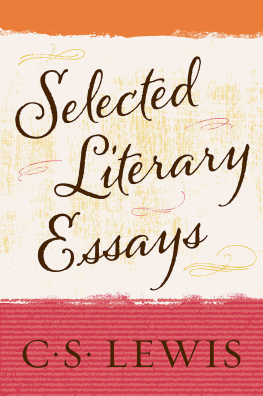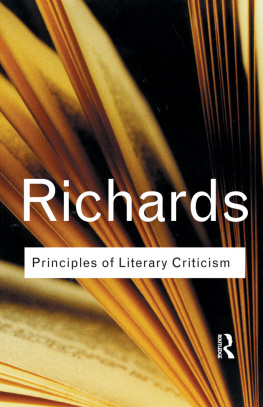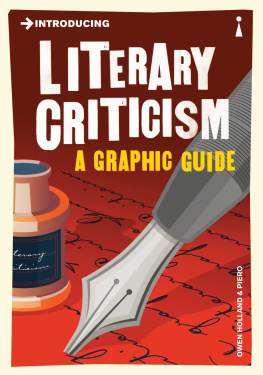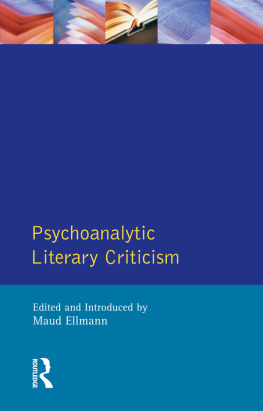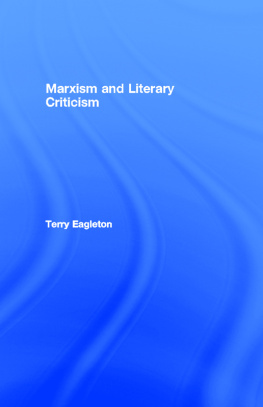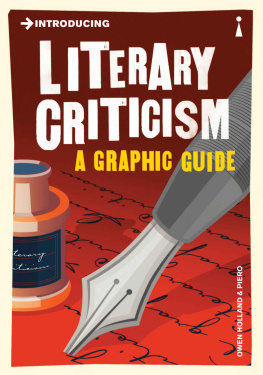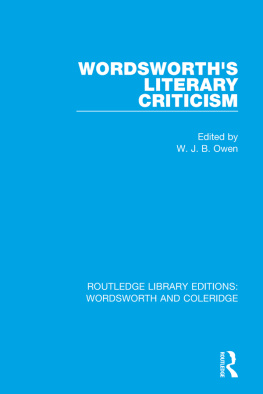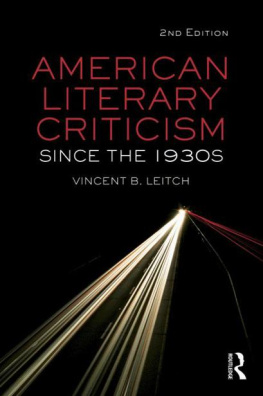The Book of Literary Terms
Other Books by Lewis Turco
Nonfiction
The Dialects of the Tribe: Postmodern American Poets and Poetry, 2012
La Famiglia / The Family: Memoirs, 2009
Satans Scourge: A Narrative of the Age of Witchcraft in England and New England, 15801697, 2009
Fantaseers: A Book of Memories, 2005
The Book of Dialogue, 2020
The Book of Forms, Fifth Edition, 2020
The Life and Poetry of Manoah Bodman, Bard of the Berkshires, 1999
How to Write a Miion, with Ansen Dibell and Orson Scott Card, 1995
Emily Dickinson: Woman of Letters, 1993
The Public Poet: Five Lectures on the Art and Craft of Poetry, 1993
Il Dialogo, Italian Translation by Sylvia Biasi of Dialogue, 1992
Visions and Revisions of American Poetry, 1986
The New Book of Forms, 1986
Poetry: An Introduction through Writing, 1973
The Literature of New York, 1970
The Book of Forms: A Handbook of Poetics, 1968
Fiction and Poetry
The Sonnetarium, 2018
The Hero Enkidu: An Epic, 2015
The Familiar Stranger, 2014
Wesli Courts Epitaphs for the Poets, 2012
The Gathering of the Elders and Other Poems, 2010
The Museum of Ordinary People and Other Stories, 2008
Fearful Pleasures: The Complete Poems, 2007
The Collected Lyrics of Lewis Turco / Wesli Court, 2004
A Book of Fears: Poems, Italian Translations by Joseph Alessia, 1998
The Shifting Web: New and Selected Poems, 1989
The Compleat Melancholick, 1985
American Still Lifes, 1981
Pocoangelini: A Fantography and Other Poems, 1971
The Inhabitant, 1970
Awaken, Bells Falling: Poems, 19591967, 1968
First Poems, 1960
the genres of fiction, drama, nonfiction, literary criticism, and scholarship
SECOND EDITION
Lewis Turco

1999, 2020 by Lewis Turco
All rights reserved. University of New Mexico Press edition published 2020
by arrangement with the author.
Printed in the United States of America
ISBN 978-0-8263-6192-9 (paper)
ISBN 978-0-8263-6193-6 (electronic)
Library of Congress Control Number: 2020936548
Designed by Felicia Cedillos
This book is dedicated to
JEAN
whose idea it was in the first place
contents
foreword
The three companion volumes, The Book of Literary Terms: The Genres of Fiction, Drama, Nonfiction, Literary Criticism and Scholarship, Second Edition; The Book of Forms: A Handbook of Poetics, Fifth Edition; and The Book of Dialogue: How to Write Effective Conversation in Fiction, Screenplays, Drama, and Poetry, Revised and Expanded Edition, have been designed to be the most comprehensive set of their kind available. The three books may be used as personal references, as creative writing texts, or as literary guides in virtually every course in the English curriculum.
However, The Book of Literary Terms is something more than simply an alphabetical listing of terms. It is organized in seven sections, the first of which is titled Introduction to the Discipline of Literature; this chapter is followed by The Genres of Nonfiction, The Genres of Fiction, The Genres of Drama, and The Genres of Literary Criticism and Scholarship.
Each of these chapters consists of brief essays covering various topics having to do with the overall subject under discussion. For instance, in The Discipline of Literature there are essays having to do with definitions of Form, Syntax, Genre, Diction and Style, and Literary Movements. Each of these essays contains illustrations of the terms discussed. At the end of each section will be found a Chapter Glossary containing terms that have not been covered in the essay, or fuller discussions of some terms that were mentioned in passing. Thus, the book may be used not merely as a reference work in all literary contexts, but also as a textbook in one genre or in several of them.
For instance, if one were working in the genre of fiction and wished to look up character or characterization, one would turn directly to the chapter titled The Genres of Fiction and check through the chapter for sub-headings that apply. One might also turn to the Chapter Glossary and look up the term in question. If one wished to find wider applications of the term, one would turn to the index at the back of the book to look up the term and find the numbers of all the pages where that term appears in the book. Or one might wish to begin directly with the index.
Another plan might be simply to begin reading the chapter, or the essay containing the term in question. One would discover close at hand other basic elements of the short story, such as plot, atmosphere, and theme. Nearby also would be such terms as narrative voice, rising action, denouement, and so forth, all arranged in such a way as to lead the reader through the elements of the short story. Such a layout and plan make the book more lively and interesting to read than an ordinary handbook.
The index is comprehensive, and it will usually indicate that a particular term is to be found in more than one place in the body of the volume; for instance, many of the elements of fiction are also the elements of drama, and in looking up these references the reader will discover not merely similarities between terms used in fiction and drama, but the differences as wellnarrative voice or dramatic irony would mean similar, but somewhat different things in each of the genres.
Speaking of drama and story writing, readers of these three texts will discover that although one of them is titled The Book of Dialogue, that volume contains complete information about, and examples of, all the elements of fiction and playwriting, not just dialogue.
Furthermore, throughout this text and its companion volumes the reader will find references to expanded information of various terms in the other books of the set. The one genre of literature that is not covered by this text is poetry, and that genre is covered exhaustively by its companion volume, The Book of Forms: A Handbook of Poetics, known throughout the trade as The poets Bible.
A draft version of The Book of Literary Terms was field-tested in various undergraduate and graduate classes at the State University of New York at Oswego and elsewhere during the spring semester of 1995, and as a result of that test the manuscript was extensively enlarged and revised. It is the belief of the author that this volume is both comprehensive and comprehensible, and that those who consult it will find it both useful and enjoyable to read.
Introduction to the Discipline of Literature
Form
Every element of language is a form of some kind. The letters of the alphabet are forms, conventions upon which the members of a culture have agreed in order to communicate; so are words, phrases, clauses, and sentences, whether spoken or written. Phonemes are the elemental bits of sound, like the
Next page

